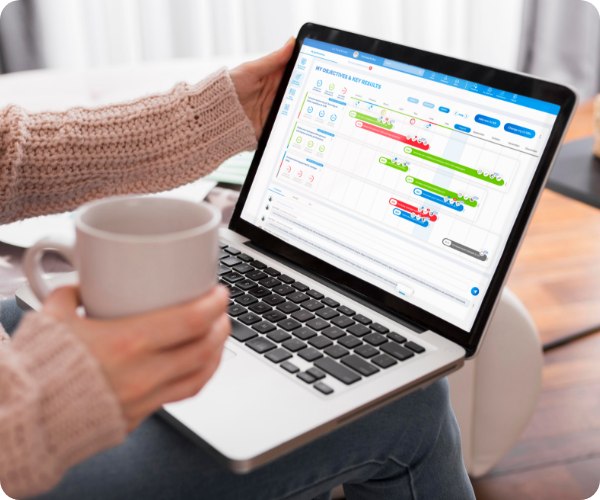PERFORMANCE & PRODUCTIVITY
Building a Performance Management System Fit For the Future

It seems superfluous at this stage to highlight the pandemic as causing a generationally defining moment for workplaces around the world, but it has pulled into focus a critical element of HR practice - performance management, and how effective traditional systems of assessment and analysis are when almost every workplace had to contend with remote or hybrid work arrangements, furlough schemes and disrupted workplaces.
Many companies are looking at what their performance management systems mean and how they will aid business health and productivity in our new normal: some, against the grain, are looking at getting rid of old hat systems completely; some have started changing assessment and communications naturally to deal with remote working, but most are finding that traditional methodology is woefully unable to cope with the new normal and, crucially, loses relevance to real life working behaviours, goals and achievements.
The big business-leader question has been how to adjust their current systems to create a better culture of personnel management and review
Performance management, a subject of many flaws and contradictions
Performance management in many cases have become performative and disconnected to the workplace.
In some of the worst examples of bad application they are used merely as a box ticking tool to complete yearly appraisals with zero input from relevant stakeholders. But in the majority of cases it’s much more subtle - the failings of performance management come down to:
Timing
As mentioned above, continual systems of review and communications are automatically useful in building trust and setting goals, plus it encourages staff to advocate for themselves directly with management on a more regular basis. Instead of merely relying on annual reviews, building continual assessment into weekly or monthly comms with your team has been proven to increase engagement, improve wellbeing, increase mental health - and logically - improve productivity and performance. It allows managers and leaders to respond to any developments immediately, ensuring ongoing alignment between the business goals and real delivery.
Yearly appraisals are not dead, but they are much more valuable and useful when well-informed and used alongside well-timed continual performance management.
Performance management has to intertwine with day to day communications and check ins, and many firms found themselves doing this automatically ...
Lack of staff engagement
Feeding directly into the above point is engagement with your teams - it is one of the most integral to healthy workplace culture. Performance management has to intertwine with day to day communications and check ins, and many firms found themselves doing this automatically as teams turned remote, but doing so strategically, getting that input from your staff throughout the working year, will involve both parties in assessment and review and tangibly improve communications.
Analogue process
The world has flipped digital and performance management has too - using a mix of face to face meetings and digital tools offer a variety of inputs, data streams and communications channels that only builds trust and confidence in performance analysis.
Bias
Performance review bias is unfortunate but frequent. Recency bias (focusing on recent events) and Primacy bias (focusing on first impressions) are typical in assessments and can be easily rectified by introducing a system of feedback gained in snapshots throughout the year, or over a period of time, from both the employee, peers, line managers and senior management.
Building a performance management process fit for the future
Continuous feedback: implement real-time employee engagement surveys and encourage collaboration through team-based communications and tools that allow for timely reflections and feedback exchange.

Planning: involve your team and stakeholders through collaborative and activity planning.
Gamification: development and assessment is only as good as the tools used to do it, and gamification has been proven to improve completion, engagement and results.
Continuous analysis: appraising your team and individuals needs to become more frequent and more human-centric. Find a solution that break down assessment into manageable pieces and value communications and engagement, rather than pure metric or KPI counting.
